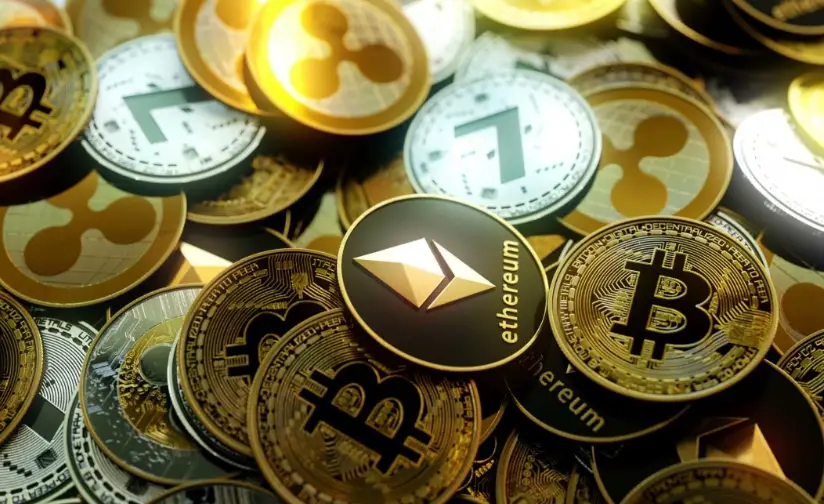Bitcoin vs XRP: Comparing Two Leading Cryptocurrencies
Bitcoin vs XRP are two well-known cryptocurrencies that have gained significant attention in the digital asset landscape. While both offer unique features and have a place in the cryptocurrency market, they have distinct characteristics and serve different purposes. In this blog post, we will compare Bitcoin and XRP, exploring their key differences, use cases, and factors that may influence their positions in the cryptocurrency ecosystem.

- Bitcoin: The Pioneer and Digital Gold: Bitcoin, created in 2009, is the first and most prominent cryptocurrency. It operates on a decentralized network and has established itself as a store of value and a medium of exchange. Bitcoin’s primary use case is as a digital currency, allowing for peer-to-peer transactions without the need for intermediaries. With a limited supply of 21 million coins, Bitcoin’s scarcity has contributed to its appeal as a potential hedge against inflation and a long-term investment.
- XRP: The Digital Asset for Financial Institutions: XRP, developed by Ripple Labs, is a digital asset designed for facilitating fast and low-cost international transactions. Unlike Bitcoin, XRP is not decentralized and relies on a consensus protocol rather than mining. XRP aims to address the inefficiencies in cross-border payments and acts as a bridge currency, facilitating the transfer of value between different fiat currencies. XRP’s focus is primarily on providing solutions for financial institutions, enabling faster settlement times and reduced transaction costs.
- Decentralization and Governance: One significant distinction between Bitcoin and XRP is their approach to decentralization and governance. Bitcoin operates on a decentralized network, where consensus is reached through a proof-of-work consensus mechanism. XRP, on the other hand, utilizes a unique consensus algorithm called the Ripple Protocol Consensus Algorithm (RPCA), which relies on a select group of trusted validators. This centralized approach has raised questions regarding XRP’s level of decentralization and control.
- Market Capitalization and Adoption: Bitcoin holds the largest market capitalization among all cryptocurrencies, representing a significant portion of the total market value. Its widespread adoption, recognition, and liquidity have made it a popular choice for both investors and users. XRP, although ranking among the top cryptocurrencies by market capitalization, has faced some regulatory challenges and scrutiny due to its association with Ripple Labs. The adoption of XRP by financial institutions has been notable, but widespread adoption among individual users remains a point of focus.
- Price Volatility and Stability: Bitcoin has historically exhibited high price volatility, which presents both opportunities and risks for investors. Its decentralized nature and large user base contribute to its price discovery and market fluctuations. XRP, on the other hand, has generally demonstrated lower price volatility compared to Bitcoin. However, it’s important to note that the overall cryptocurrency market can experience significant volatility, and investors should be prepared for price fluctuations in both assets.
- Regulatory Considerations: The regulatory landscape surrounding Bitcoin and XRP differs. Bitcoin’s decentralized nature and established recognition have positioned it as a more widely accepted and regulated cryptocurrency. XRP, due to its association with Ripple Labs, has faced regulatory scrutiny and legal challenges related to its classification as a security. Regulatory developments and clarity will play a crucial role in shaping the long-term prospects of both cryptocurrencies.
Conclusion:
Bitcoin and XRP are two prominent cryptocurrencies with distinct characteristics and use cases. Bitcoin’s focus as a decentralized digital currency and store of value has solidified its position as the leading cryptocurrency. XRP, designed for fast and low-cost cross-border transactions, targets the financial industry and aims to enhance the efficiency of international payments. While Bitcoin’s decentralization and widespread adoption contribute to its market dominance, XRP’s adoption by financial institutions showcases its potential for disrupting traditional financial systems.
Investors and users should consider their investment goals, risk tolerance, and long-term outlook when deciding between Bitcoin and XRP. Bitcoin’s position as the pioneer and digital gold appeals to those seeking a decentralized store of value, while XRP’s potential lies in its ability to streamline cross-border transactions and drive innovation within the financial sector. As the cryptocurrency ecosystem evolves, Bitcoin and XRP will continue to shape the landscape, each serving unique purposes and contributing to the ongoing development of digital assets.